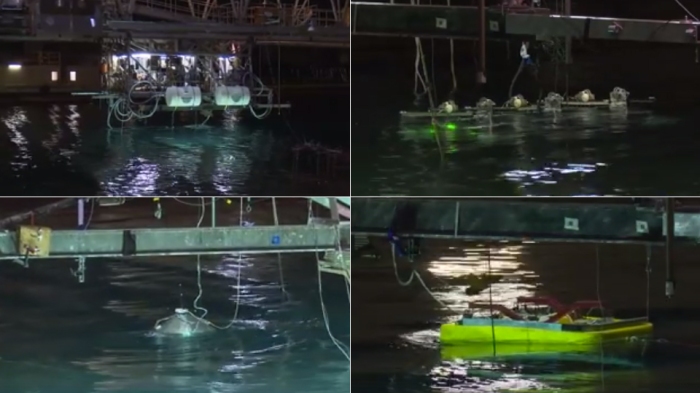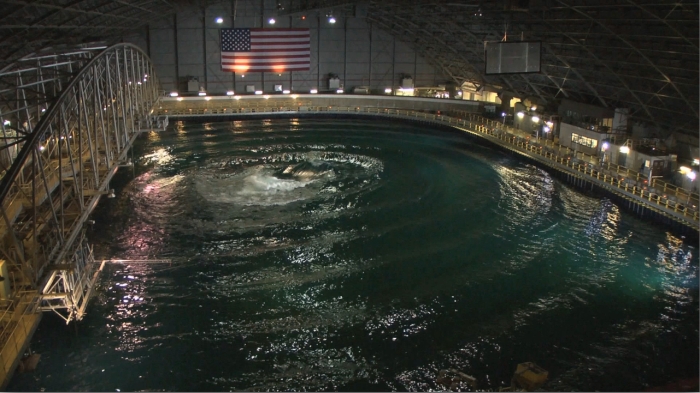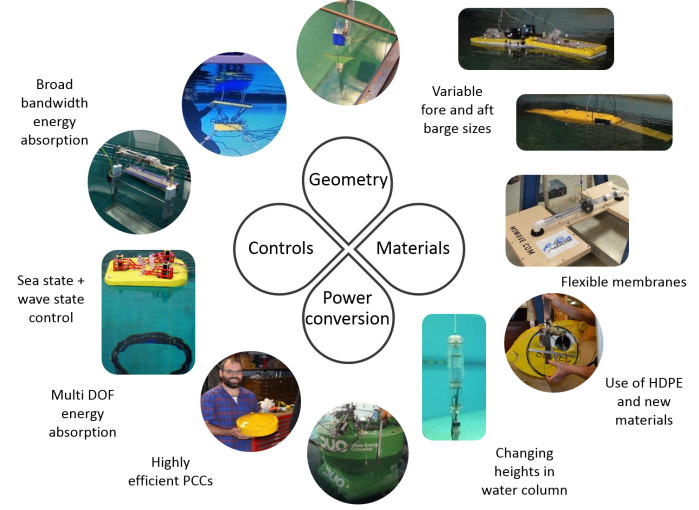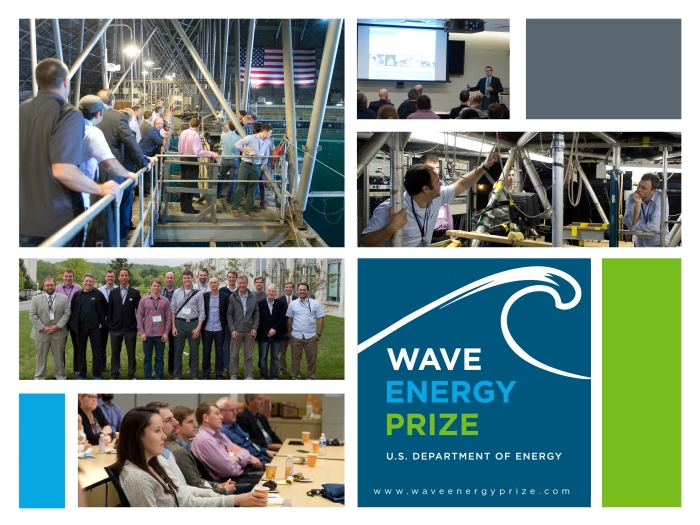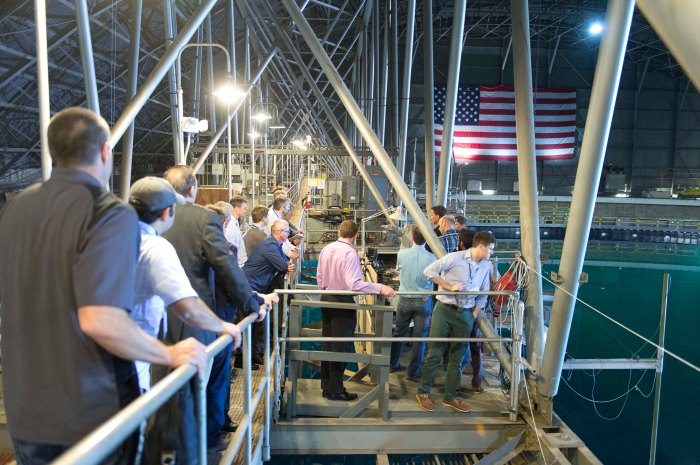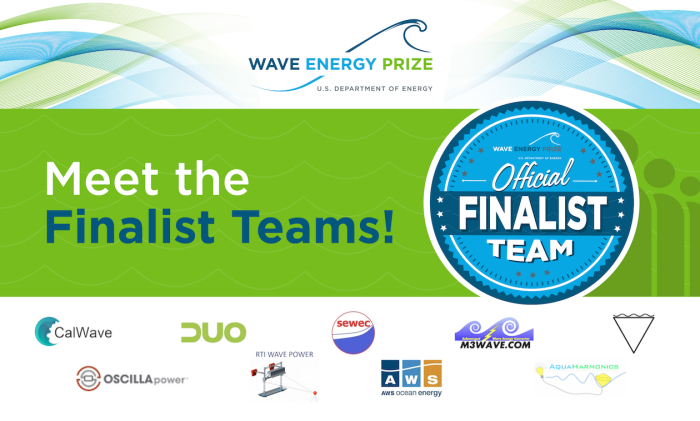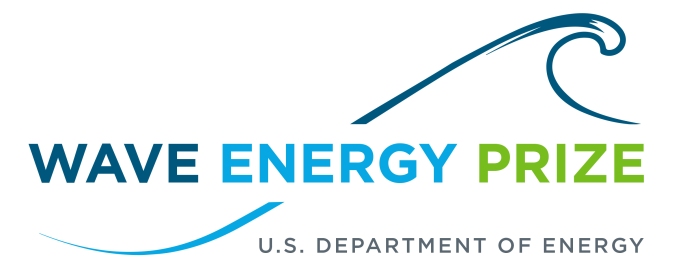The goal of the Wave Energy Prize is to stimulate the development of innovative wave energy converters (WECs) that have the prospect for becoming commercially competitive with other forms of electricity generation. Specifically, the Prize seeks to double the state-of-the-art performance of WECs. As mentioned in a previous blog, when comparing the economic attractiveness of power generating technologies, levelized cost of energy (LCOE) is a common metric frequently used in the power generation sector. LCOE is the ultimate expression of the ratio between effort (cost) to benefit (energy generated).
Unfortunately, LCOE cannot be used in the Wave Energy Prize because the data needed to determine LCOE are either not available or are very unreliable at low Technology Readiness Levels (TRLs), and the Wave Energy Prize is fundamentally expecting to be operating with WEC technologies that are at low TRLs.
With support from Sandia National Laboratories and the National Renewable Energy Laboratory, the Prize team derived a new metric to determine effectiveness of low TRL concepts that is a modification of existing WEC metrics. Importantly, this metric allows for robust analysis of innovative WEC devices using novel methods and materials. ACE is a benefit to cost ratio, and is a proxy for LCOE, appropriate for comparing low TRL WEC designs.
The two components that comprise the ratio ACE are described in full in the Wave Energy Prize Rules. In summary they are:
- Average Climate Capture Width (ACCW) = a measure of the effectiveness of a WEC at absorbing power from the incident wave energy field.
- Characteristic Capital Expenditure (CCE) = a measure of the capital expenditure in commercial production of the load bearing device structure.
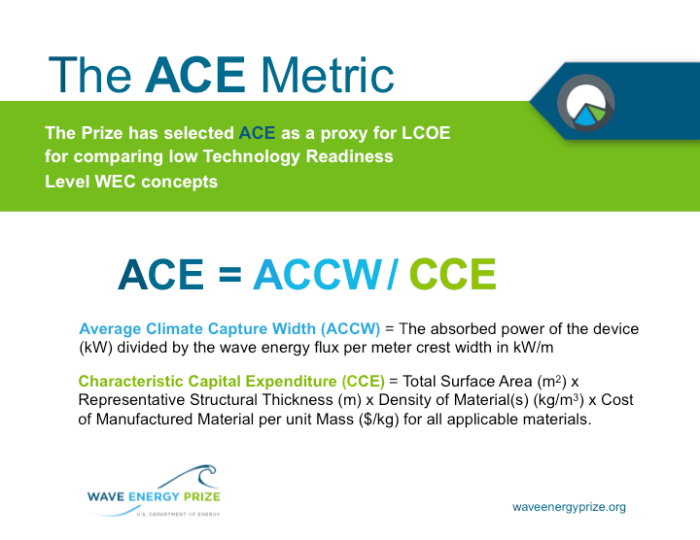
Analyses of the current state of the art reveals that existing WEC concepts achieve an ACE value of 1.5 m/$M (meters per million dollars). For WEC technologies that emerge from the Wave Energy Prize to be on a development trajectory to become commercially competitive, our analysis shows that in the Prize, WECs must achieve a minimum threshold value for ACE of 3 m/$M. Below is a detailed description of how to calculate ACE.
Average Climate Capture Width
The average climate capture width (ACCW)—the numerator of ACE—represents an expected yearly average capture width for a WEC operating in typical West Coast wave climates. ACCW is calculated from a set of WEC capture widths for a select set of irregular wave conditions that are either measured in sub-scale physical model testing or calculated from numerical simulations. The full scale capture widths are weighted by the yearly occurrence of the specified test wave conditions at select locations and summed to yield the ACCW. This means that a device that performs very well in one sea state but poorly in other sea states may have a relatively low ACCW when compared with the maximum capture width. Alternatively, a device that has modest performance over a wide range of sea states and wave directions may have a higher ACCW.
Calculating ACCW
ACCW is calculated in two steps, first by calculating the average annual capture width (AACW) for each wave climate of interest through weighted absorbed power measurements in the sea states of each wave climate, and then by averaging the AACW values to give ACCW. For more details on these calculations, see Appendix I of the Wave Energy Prize Rules. Below is a description of the approach for determining which tests to perform to determine ACCW, followed by a simple illustration of calculating AACW and ACCW.
Both tank testing and numerical simulations must cover enough sea states to represent a realistic wave climate. Simulations should be performed in enough irregular sea states that the power in every bin of the resource matrix, or joint probability distribution (JPD), at the wave climate can be approximated. For tank testing, testing at every sea state bin at the wave climate would be over burdensome, but enough sea states should be tested to represent the characteristics of that climate.
In both cases, the sea states that are tested should be weighted so that average annual power absorbed for a particular wave climate can be estimated. (This scaling is represented by Ξ in Appendix I of the Wave Energy Prize Rules.) The resulting dataset will be a power matrix of device power absorbed for significant wave heights and energy periods that cover the range of sea states experienced at the wave climate of interest. Multiplying the power matrix by the JPD and summing the values of the matrix yields the average device power absorbed for a particular wave climate. The average power absorbed is then used to determine the average annual capture width.
For example, for a particular wave climate, if the average power absorbed by a WEC is 90 kW and the average annual wave resource is 30 kW/m, the WEC would have an AACW of 3m.
P average absorbed = 90 kW
P resource = 30 kW/m
AACW = ( P average absorbed (kW) / P resource (kW/m) ) = 3 m
Per Appendix I of the Wave Energy Prize Rules, ACCW will then be given simply by averaging the AACW for all wave climates of interest.
Characteristic Capital Expenditure
Prior analysis performed at NREL shows that the largest contributor to wave energy LCOE is the structural cost of a WEC, and in the Prize, the Characteristic Capital Expenditure (CCE) is used to estimate the structural cost of a device (CCE and RST were discussed in a previous blog post, and are discussed in more detail here). The device structure accounts for the mass of any and all load bearing structures that are critical to the power conversion path. This includes:
- Any structure that interacts with the wave environment
- Any supporting structures used to resist forces in the power conversion chain in the load path/force flow path
- Any significant load-bearing foundation components
This implies that for a heaving buoy, for example, not only must the structure of the buoy be used to calculate CCE, but the structure of the gravity base itself must also be used. For offshore devices that require substantial structures, such as jack up barges, those structures must be included as well.
Once the structure is defined the CCE of a device is calculated using the following equation:
CCE = RST * Asurf * ρ * MMC
where:
- RST = representative structural thickness [m]
- Asurf = total structural surface area [m2]
- ρ = material density [kg/m3]
- MMC = manufactured material cost [US$/kg]
If more than one structural material is used in a device, the individual CCEs for each material are summed to give a total CCE. Below are details on calculating each of the variables above for a single material in a device.
Representative Structural Thickness
The representative structural thickness (RST) mentioned in the above equation is a scalar that is used to determine the total structural mass when multiplied by the surface area of the material. The RST can be visualized as a single uniform thickness obtained by “melting down” all of the structural components of a material, and then “casting” the shape of the WEC with a constant wall thickness, the RST. This means that all stiffeners and support structures are “lumped” together. A simple representation of the RST is shown below with a flat plate. The original structure includes a grid of stiffeners with a thin hull. That same quantity of material is then represented by a solid plate with the thickness given by the RST.
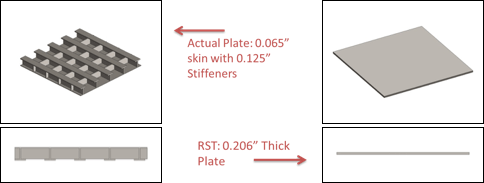
Manufactured Material Cost
The last critical variable to calculate CCE is the manufactured material cost (MMC). This value represents the total cost to manufacture the material used in a device at full production scale. Therefore, the MMC includes the raw material cost, any fabrication, forming, and assembly.
In practice, the value of MMC will fluctuate due to material suppliers, complexity of device, number of devices, along with many other market factors. For example, the raw cost of structural steel may be approximately 1 $US/kg but by the time any forming, cutting, or welding is made the MMC may be closer to 3 $US/kg at full production. For a device already built, one can back out the MMC by dividing the total cost to build the device using a particular material by the mass of that material used.
Summary and Example Calculation of RST, CCE, and ACE
Once all the above variables have been defined, one can calculate the RST, CCE, and ACE values for any wave device. Below is an example calculation using cost and performance estimates from the DOE MHK Reference Model #5 which is made of steel and is assumed to operate offshore of Humboldt Bay, Calif. The absorbed power for Reference Model #5 was simulated at each sea state using the numerical code WEC-Sim developed by the National Renewable Energy Laboratory and Sandia National Labs:
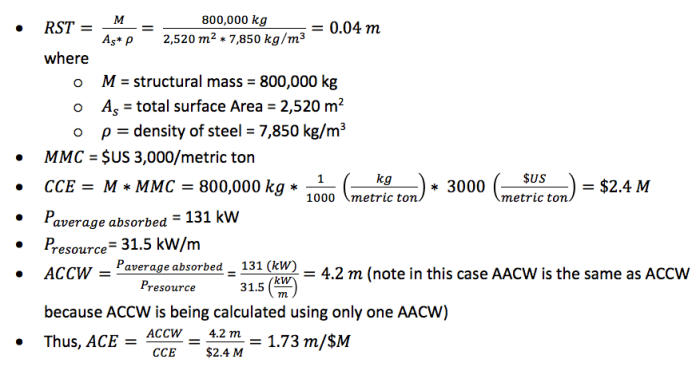
Using this method one can estimate and compare the economic viability of different devices at an early stage. However, one must be careful when employing this method for devices that have different percentage breakdowns with regards to structure, power take-off, mooring, etc. In these situations, and when comparing devices, a more reliable method would be to include all capital costs in the CCE. If all the initial capital costs were included, the CCE would increase from $2.4M to $4.97M, yielding an ACE of 0.84 m/$M.
